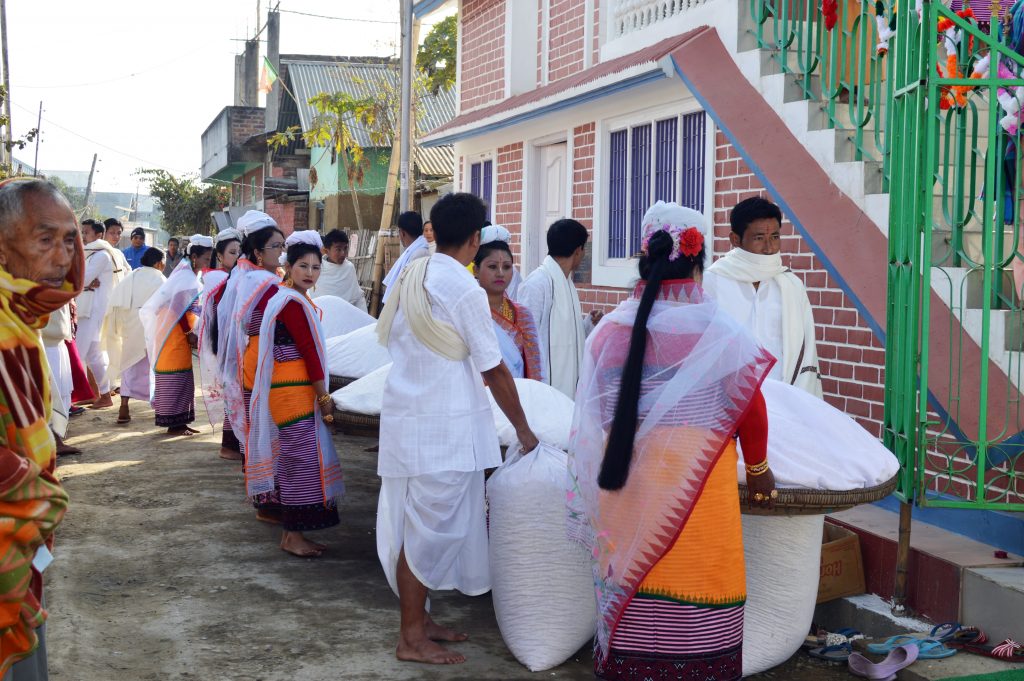MOIRANG THE CRADLE OF MANIPURI CULTURE
In ancient Manipur Moirang was one of the seven principalities ruled by 52 successive coroneted Kings. It was the oldest civilization contributing and enriching cultural values of Manipuri. Dating back to anciency, from the reign of Iwang Puriklei Phang Phang Ponglen hanba coronated in 52 B.C. down to Khellei Nongnang Telheiba (1763-1789 A.D.) Moirang could maintain her sovereignty except casual interferences from Ningthouja Kingdom and ultimately thereafter lost it to the letter emerging into a strong, united and integrated Manipur Kingdom.
Moirang is a nature-blessed small town today located on the South-Western fringe of Loktak Lake, the largest fresh water lake in NE India. It is the only land of floating huts in the world and also the only homeland in the world of the endangered brow antlered deer locally known as Sangai which is the state animal of Manipur. It hosts rich bio-diversity in and around Loktak eco-system with picturesque of hillock isles, enchanting valleys, seasonal places for eco-tourism and wonderful inland spot of water sports. Trans Siberian and Sub-Himalayan migratory birds visit Loktak Lake every year to the pleasure of nature lovers. Moirang is the birth place of folk songs, dances and music and cradle of rich cultural heritage of Manipur. Its history and classics are the mainstay of Manipuri Culture and history. The happy coincidence of being the first place where the Tri-colour Flag of Free India was unfurled by the victorious INA on 14th April, 1944 further enhances the historicity of a modern Moirang in the map of national and internal importance.
MOIRANG KANGLA
MoirangKangla located in the heart of Moirang was in its ancient form surrounded in all four directions by natural moth – Moirang River. Thambongtak Maril (stream). It was the seat of governments and administrative institutions of the kingdom of Moirang. The Kangla consisted of a site for coronation of kings, house of kangla Yaibung (a divine drum), Nungoibi Lallu Chanpham (site for punishment and promise), Keke Meetupham Moirang Miyangpham (highest court of justice and judgement), abode of Leimarol Khongjang Leimai Hanbi and Kasa Nongthou, indoor playground, Thon-Taret Thallongmei (conference-cum-trial hall) etc.
Co-incidentally MoirangKangla was the site for planting the Tri-colour Flag of Free India by the Indian National Army on 14th April, 1944. At present, the whole structure of MoirangKangla is not in visible form except pointing by fingers the locations where they were once. However, a tiny indigenous shape temple erected in its place shares the same compound with INA Martyrs’ Memorial Complex.
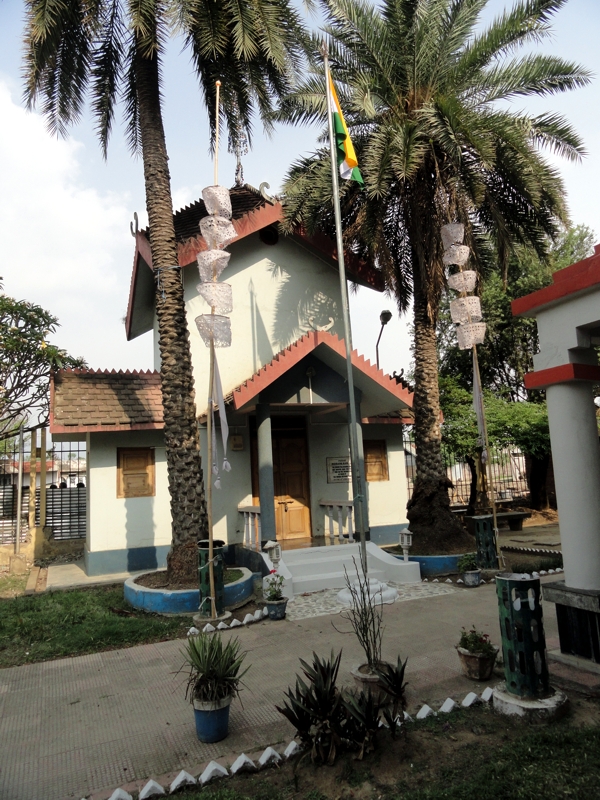
TEMPLE COPLEX OF IBUDHOU THANGJING
Iputhou Thangjing, much deared and revered by the people of Moirang is the Supreme Godhead and progenata of Moirang Salai (Clan). He established the Kingdom of Moirang and look after the people for their welfare, progress and protection.
His Abode, the Thangjing Complex is the sacred place for the people of Moirang and devotees from across the state and beyond. It consists of Main Temple Building where idols of Iputhou and Ibenthou are set on a wel-decorated pedestal, a museum, seats of Phamnaibas (courtiers) and Phamnaibis, Office of the Thangjing Seva Mandals (managerial representatives), Gallery, Guest House, Catering and dining hall, mini garde, statues of Khamba and Thoibi, three entrance gates one of which is of indigenous architectural design and above all, an open air theatre in which cultural parties from different places of Manipur and beyond used to perform their items during the Haraoba (God pleasing) Festival held normally in the month of May.
The Temple Complex itself is the symbolic expression of the tradition, culture, administration, sports, cosmopolitic of ancient Moirang civilization.
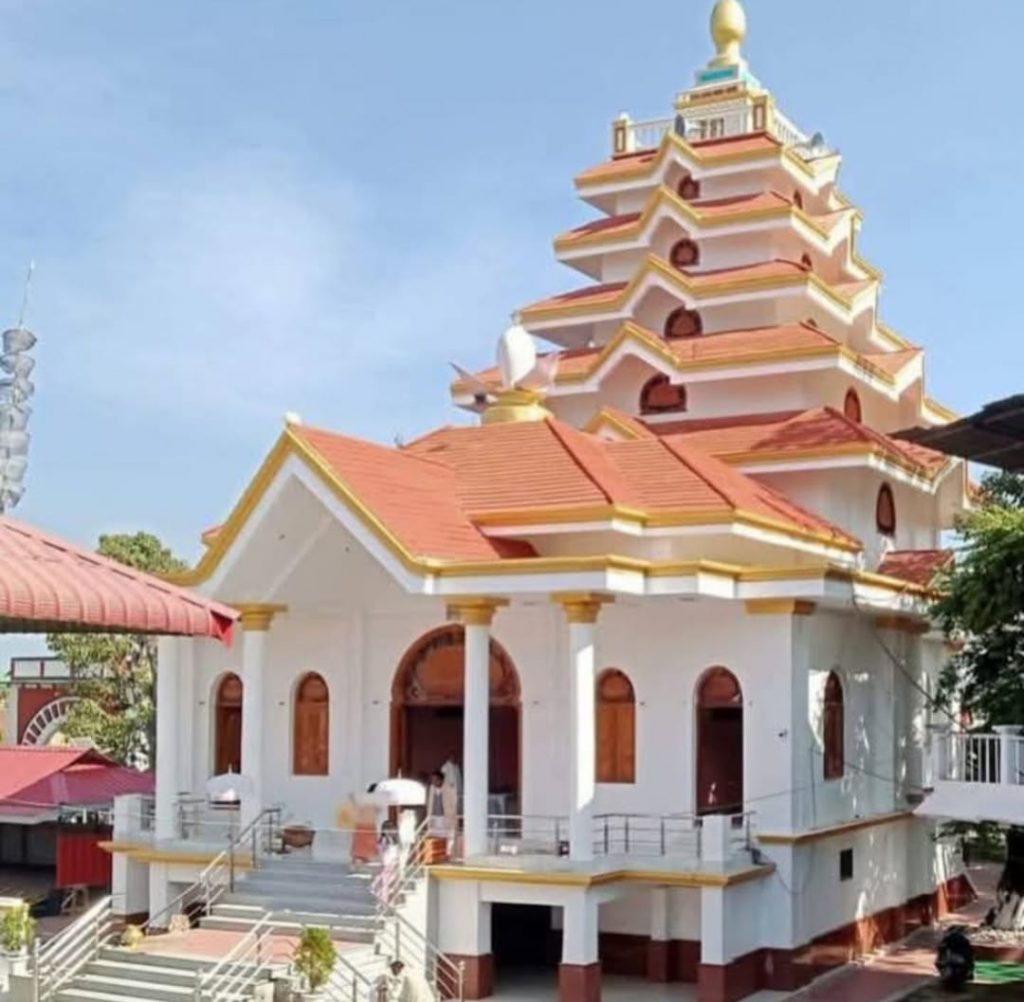
KEIBUL LAMJAO NATIONAL PARK
Keibul Lamjao, the only floating national park in the world covering about 52 sq.km. and situated in the southern fringe of Loktak Lake is the only natural habitat of the endangered brow antlered deer, locally known as Sangai co-habiting with other wild animals and birds. Sangai is exceptionally characterized by the presence of elongated hooves with no hair on her lower legs and makes it convenient for moving on phumdis (floating bio-mass) without any difficulty. Sangai can live nowhere other than this marshy and swampy floating bio-mass full of aquatic plants like weeds. This only specy in the world was limited to the population of few lens in early 1950s and very near to total extinction due to indiscriminate poaching and killing by ‘hunters’ and fast deteriorating unfriendly environment and degraded eco-system of Loktak Lake. To-day KeibulLamjao has been declared national park before which it was a wildlife sanctuary. By latest census report the population of Sangai has been increased to 214. Every year the park attracts tourists in large number, particularly, the naturalists. ‘Live with Sangai’ has become a campaign motto among the state forest Department, NGOs and Local people.
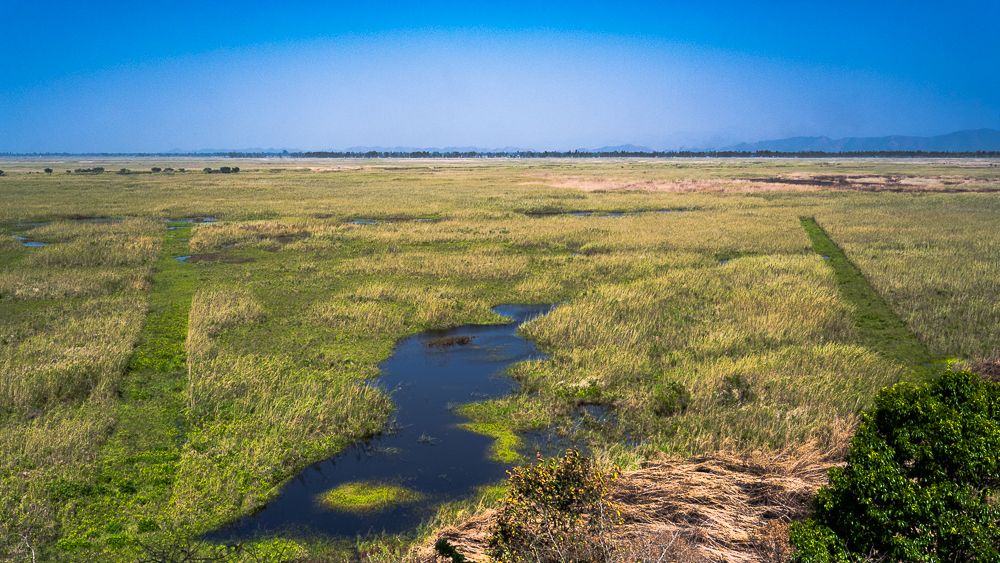
REGIONAL WATER SPORTS COMPLEX
The complex is located just at the angular meeting point of Takmu and Hubidak water body. It was a long cherished dream of water sports lovers and came to a reality when Moirang Municipal Council and Military Civic Action Programme Swang into action in 1998 in order to facilitate a venue for water sports events of the 5th National Games (February 14-24,1999) held in Manipur. Experts hold that the complex is the safest and best suited place for canoe, kayak and rowing and also is the largest island water sports complex in Asia.
The complex consists of a sizable Boat House for accommodation of canoe, kayak and rowing boats other equipments and dress rooms for oth boys and girls. It is exciting and thrilling to witness the regular practice session of sports personal for training and participation in state, regional and national events under strict supervision of coaches who bring laurels in national and international events. Provision for amateur water sports in the complex is being introduced. Amateur boating by the tourists in the complex/waterbody is fast emerging as a lot cake agenda.
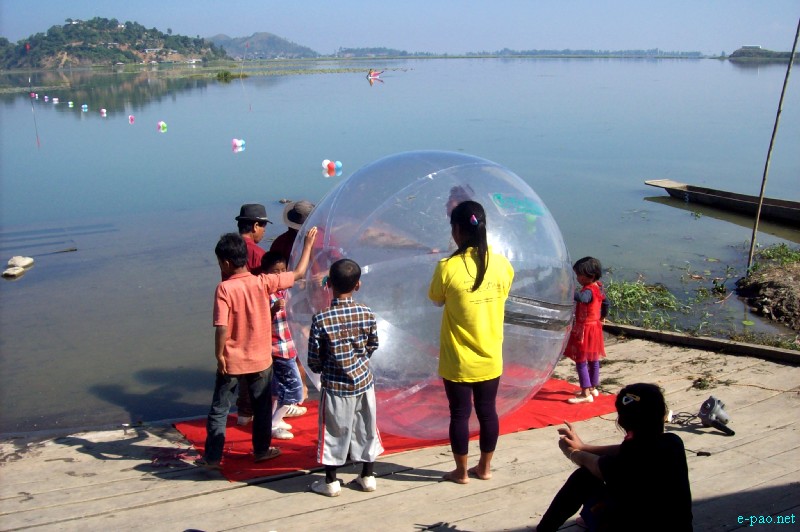
OMBA NURATHEL GARDEN
A natural garden in the two isles Omba and Nurathel hillock in the midst of Loktak Lake is far developing into a beautiful destination for tourists. The surrounding lake environment and bay by waters with the addition of artificial preparations like floral and shrubial plants of local and exotic species enhance the thrilling charms of harmony between nature and man make. More fascinating is accessibility to the garden by Water drive of 1.5km. on boat across the Takmu Sports Water body a ring road that connects Hanubi Ching and Mamang Chingjao.
The garden has become a hot spot for picnics on account of structural facilities which consist of auditorium. Kitchen cum dinning hall, HawaGhar and welcome gate. Government of Manipur and Moirang Municipal Council are taking interest in developing the garden into one of biggest tourist destinations in the state.
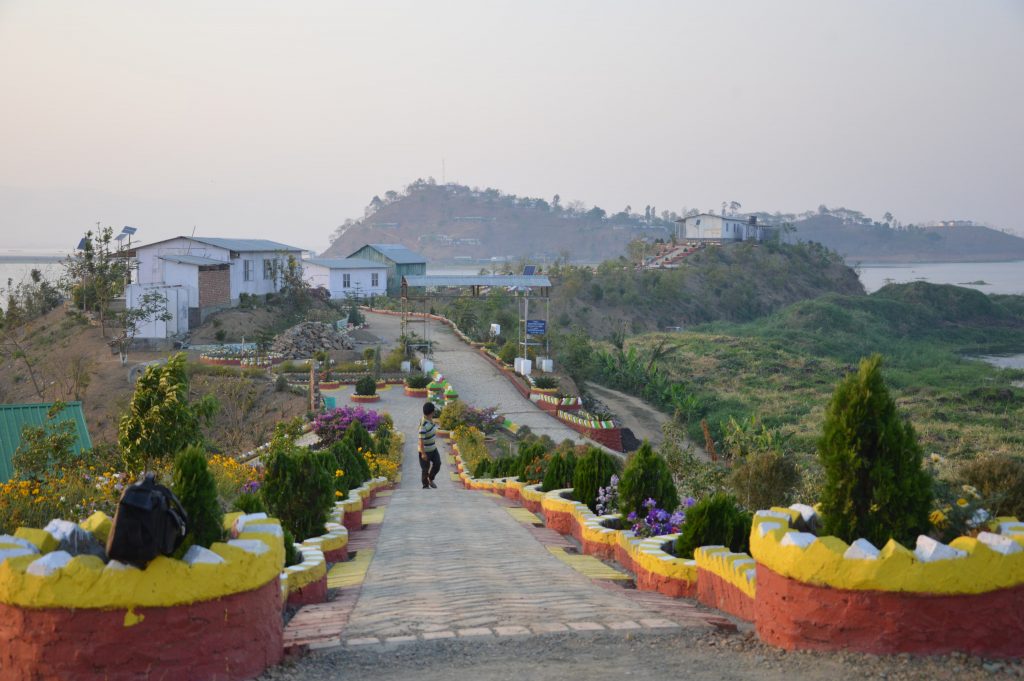
AWOON KEITHEL AND THOIBI SHOPPING COMPLEX
Awoon Keithel is the only existing Keithel (market) out of the nine pre-existed keithels of ancient Moirang kingdom. The old structure which was constructed in 1953 by the Moirang Improvement co-operative Society (Unlimited) had been replaced recently by a architect designed single storeyed building with all modern facilities in tune with emerging trends of urbanization. The Thoibi Shopping Complex, expecially by its indigenous art work and structural designs and host of items being sold ranging from local products to semi-hi-rect ones attracts as one of the biggest markets in the state. The Awoon Keithel is best known in Manipur for fishes, aquatic products and handloom products. ‘Moirang Phijal’ and ‘Moirang Phi’ a border design of Inna-phi (Chaddar like cloth) taken after Moirang and designed the woman folk weavers of Moirang earns national and international fame. The command area of the market is comparatively so big that it covers a sizable part of Moirang Sub-Division, Bishnupur and Churachandpur District. As an active programme of Moirang Municipal Council two more markets one for whole sale fishes with facilities of cold storage (by which it will be the first and only kind of its own) at Moirang Patlou Leikai and another market complex at Moirang Lamkhai are fast coming up and scheduled to be completed in 2015.
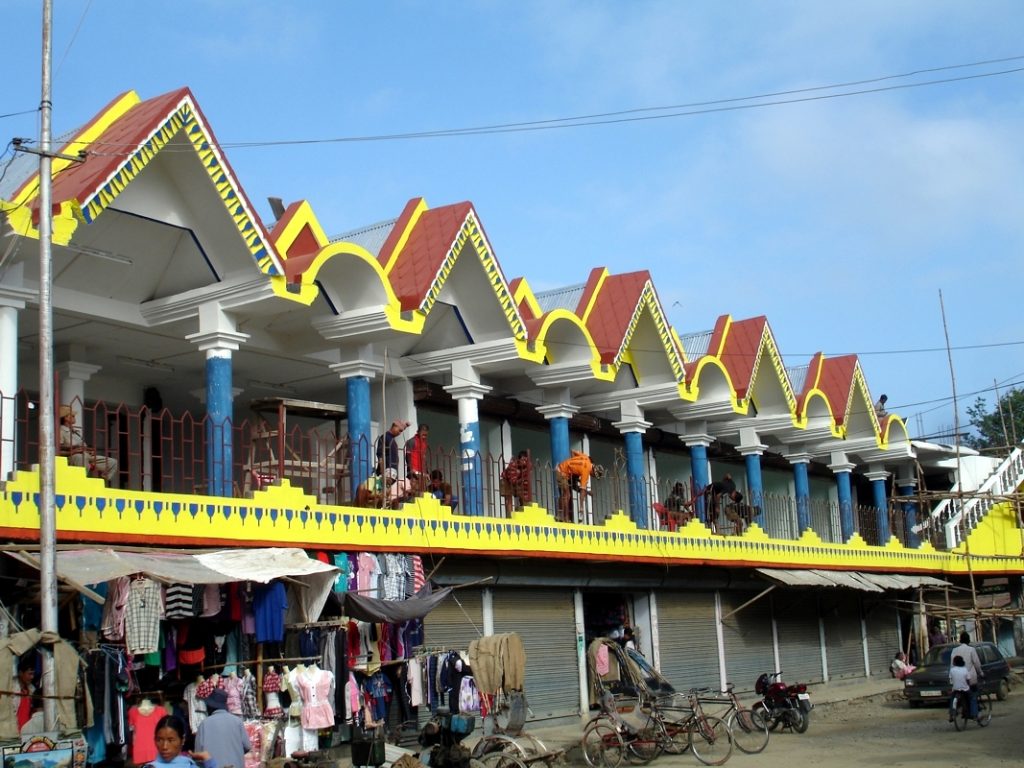
LOKTAK LAKE
No douft, Loktak is the largest fresh water lake in NE India. The surface area of the Loktak Lake varies from time to time. During monsoon it swells to the extent of 286 sq.km. and shrinks merely to the size of 90 sq.km. in winter season. Up and down in the level of lake water due to natural processes cultivates in the enrichment of its fauna and flora in the lake environment. It is the life of a living Manipur regulating its climate and water dynamics. Not only of its geographical importance Loktak Lake is closely interlinked and interwoven with social political, historical, cultural, literary and economic activities of the people of the surrounding people and Manipur as a whole. It has a strong scientific implication to say ‘No Loktak No Manipur’ It is the store house of indigenous aquatic food staffs and directly contributes 40% of the total fish products of Manipur.
The natural Scenic beauty of Loktak Lake is boundless, literally to say. A glimpse of the lake from atop the Sendra hillock enthralls every viewer and as such, it attracts thousands of tourists from abroad and domestic. The vast expanse of water provides a suitable place for water sports – Canoe, kayak, Yatch and rowing.
Ever since the commission of Loktak Multipurpose Hydro Project in 1970 the euthrophication process of Loktak Lake is on rapid strides. As a result, eco-system of Loktak has been disturbed and environmental imbalance set in. In order to reverse the process from further deterioration it has been included in the Ramsar List of Wetlands in 1971 and Loktak Development Authority swings into action over the last two decades or so to save it.
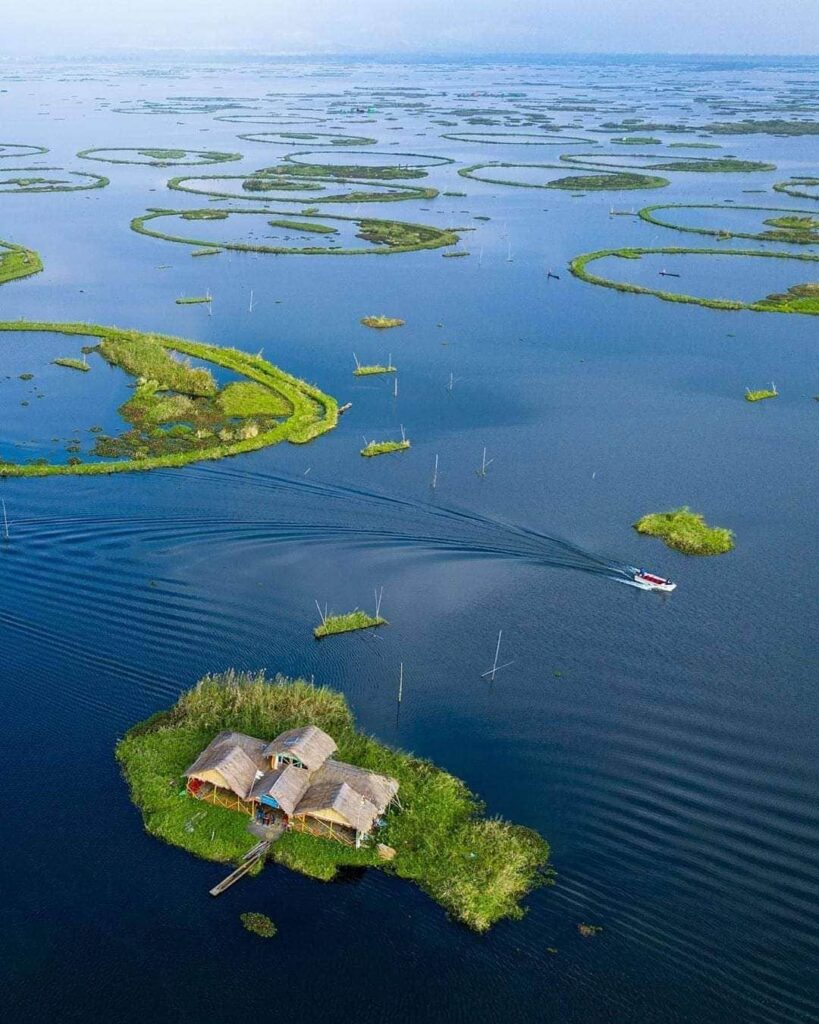
SENDRA TOURIST HOME, MOIRANG
Sendra Tourists Home is the best spot situated on the hilltop of Sendra hillock. It is the ultimate tourist destination from all over the world to witness the bewitching and heart throbbing panoramic views of Loktak Lake – the vast expanse of dancing waves, scenic beauties of stretching landscape with tiny villages at far yonder, captivating bluish fills, lusty valley, chirping of birds, sporting of migratory birds, floating huts studded far between, cool and refreshing breeze, ribbon labyrinth connecting Moirang town and Sendra hill etc. Atop the hillock a restaurant of exquistic style cum pavilion type view points are well fitted for the pleasure of visitors and onlookers. Opposite to it there is facility of restrooms for family and quests. It has become a classic of foreign tourists and important visitors.
Only recently Sendra Tourist Home after being entrusted to the management of Hotel Classic, Imphal further improvement has been made and upgraded at par with international standard besides a lake resort is under active consideration to be materialized in near future. It is almost certain that the home will be a home away from home as one of the hot tourist spots in N.E. India.
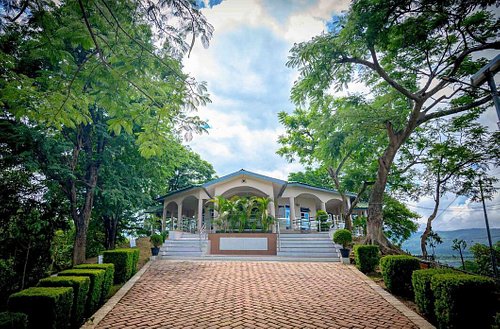
AYANG LEIMA KABOK CHAIBI
Moirang has various unique traditions and cultural activities and practices and one of them is a one-month long Kabok Chaibi festival of Ibenthou Ayangleima Ahan and Atombi held normally during the intervelling months of December and January. Ibenthou Ayangleima Ahan and Ibenthou Ayangleima Atombi are respectively the first and the second spouses of Iputhou Thangjing. They symbolize the goddesses of prosperity, wealth and craftsmanship skill.
During the period of one-month long festival Iputhou Thangjing is believed to stay in the temples of the two Ibenthous which are located in close proximity in Khoyangbam Leikai and Moirangthem Leijubam Leikai. One implicit significance of the festival is that Goddesses of wealth and prosperity visit every household of Moirang carrying KABOK on headload and shower blessings to all devotees along with the distribution of Kabok, a kind of corn flaked foodstuff made from paddy. These kaboks are believed to be surcharged with divinity and protect the devotees from evil spirit.
Temples ofthe two goddesses had recently been renovated with indigenous architectural designs and deserved to be tourist centric.
